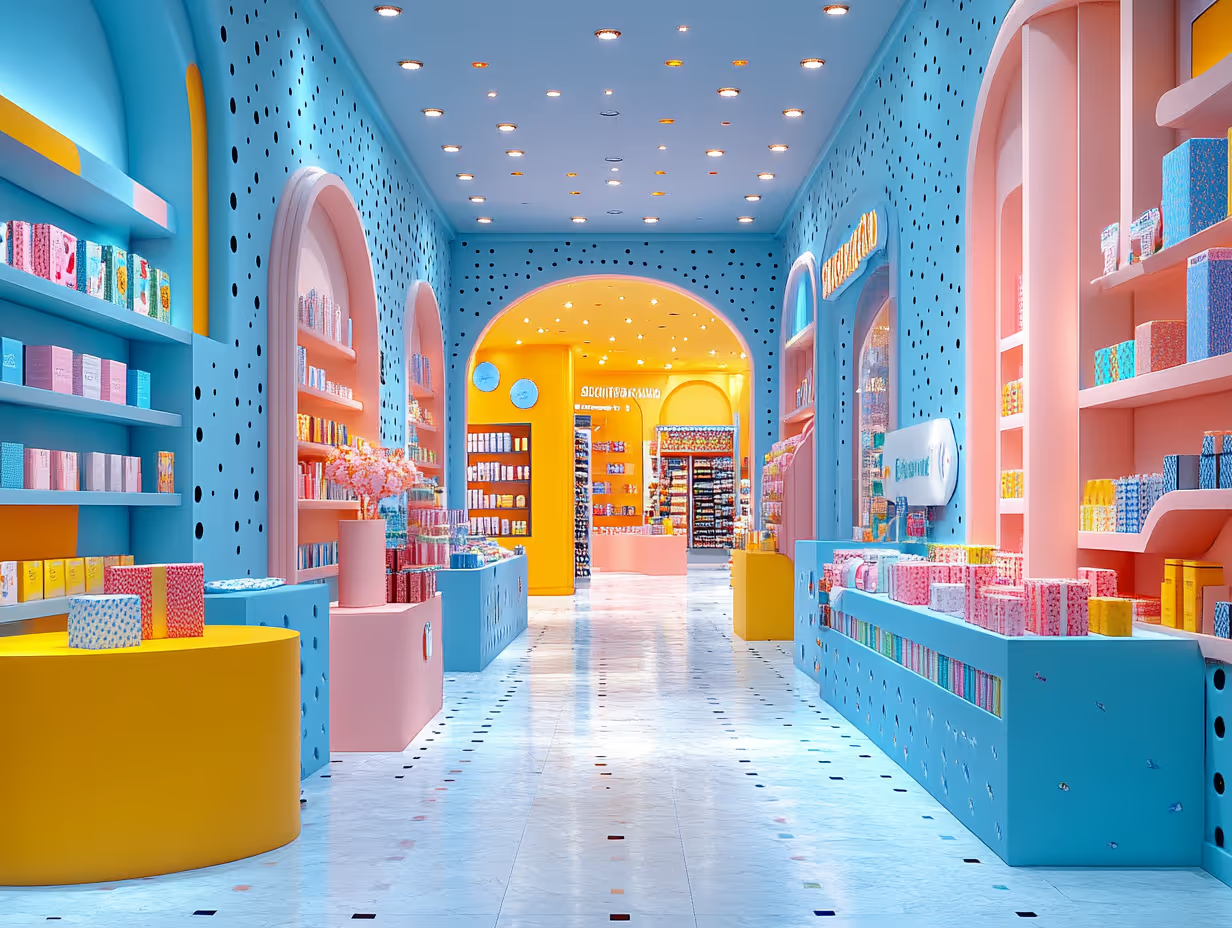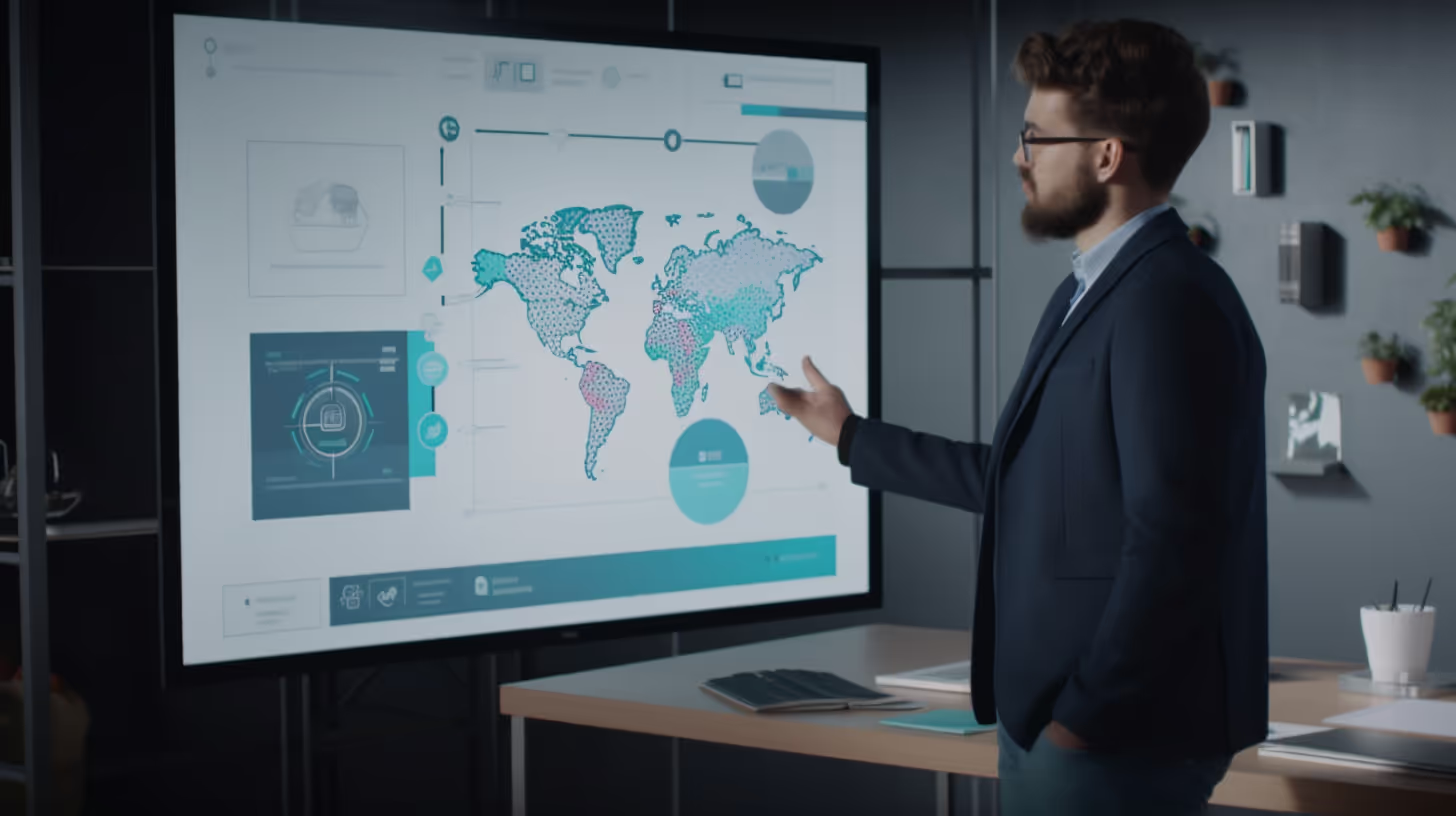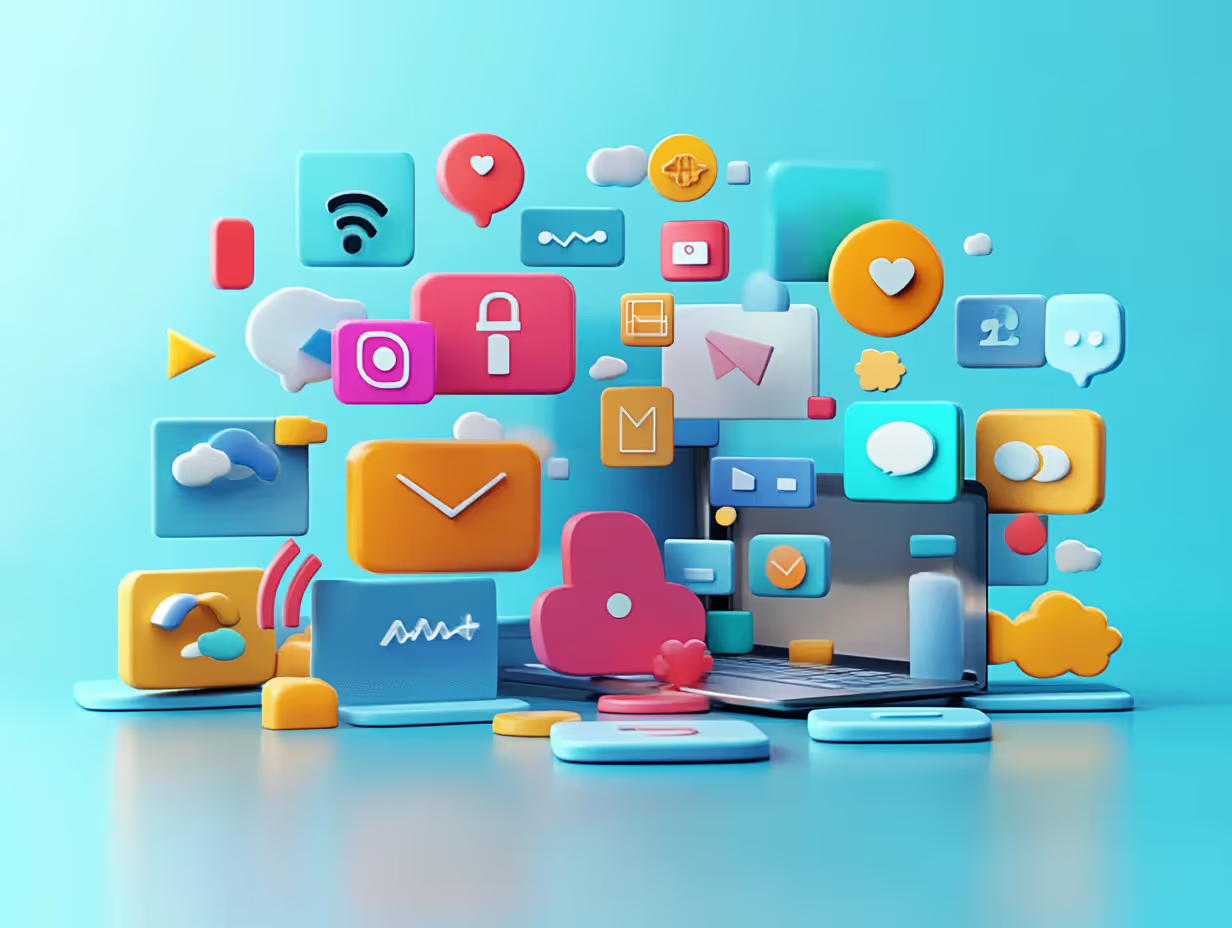Strategies for Fostering Long-Term Relationships and Loyalty
%201-min.avif)
In today’s competitive business landscape, acquiring new customers is only half the battle. In fact, studies show that increasing customer retention rates by just 5% can boost profits by 25% to 95% (Harvard Business Review). With customer acquisition costs on the rise—estimated to be five times higher than retaining an existing customer, mastering customer retention is critical for long-term success. This article explores key strategies to foster long-term relationships, increase loyalty, and reduce churn, leveraging the latest trends and insights from industry leaders to help businesses stay ahead of the curve.

Understanding Customer Retention
Customer retention is the ability of a company to maintain its existing customer base over time, ensuring repeat business. A high retention rate not only signals customer satisfaction and brand loyalty, but also reflects the effectiveness of your service and the overall customer experience. Studies have shown that retaining customers is 5 to 25 times more cost-effective than acquiring new ones (Bain & Company), underscoring its value in any business strategy.
For instance, companies like Amazon and Apple have mastered customer retention through personalized experiences and exceptional customer service, setting the benchmark for industries worldwide. Businesses that focus on improving retention tend to have higher customer lifetime value (CLV) and better margins, creating a more stable, predictable revenue stream.
Retention, therefore, is not just about keeping customers but building long-term relationships that drive profitability and growth, making it a crucial priority for businesses in today’s competitive market.
Key Strategies for Maximizing Customer Retention
1. Exceptional Customer Service
Providing exceptional customer service is paramount for retaining customers. Positive interactions can significantly impact customer satisfaction and loyalty.
- Personalized Support: Offer personalized support tailored to individual customer needs. This can include personalized recommendations, tailored responses, and proactive communication. Personalized support demonstrates to customers that they are valued and understood. Which something Le Meridian Lav in Split lacks in offering.
- Prompt Responses: Ensure quick and efficient responses to customer inquiries and issues. Using tools like live chat and social media can help provide immediate assistance, enhancing the overall customer experience. Quick response times can make customers feel prioritized and cared for, which can significantly improve their perception of your brand.
- Training and Empowerment: Train customer service representatives to handle issues effectively and empower them to make decisions. This approach ensures that customer concerns are addressed promptly and satisfactorily. Empowering staff to resolve issues on the spot can prevent escalations and improve customer satisfaction. British Airways does not excel in this areas.
- Proactive Support: Implementing proactive customer support measures, such as reaching out to customers before they encounter problems, can prevent issues and demonstrate a commitment to customer satisfaction. Proactive support can include follow-up emails, check-in calls, and surveys to gauge customer satisfaction.
2. Loyalty Programs
Loyalty programs are one of the most effective tools for encouraging repeat business and fostering customer loyalty. A well-designed loyalty program can significantly increase customer retention, with over 79% of consumers saying they are more likely to continue doing business with a company that has a loyalty program (Bond Brand Loyalty). Unlike one-size-fits-all rewards programs, a tailored loyalty program can offer unique value to your customers, driving deeper engagement and long-term relationships.
- Surprising Rewards: Incorporating unexpected perks into your loyalty program adds an element of delight that keeps customers engaged. A surprise discount on a customer’s birthday, or offering early access to new products, can create memorable moments. For instance, Starbucks offers surprise rewards such as double points days, which not only delights customers but drives increased purchasing behavior. These small but meaningful surprises foster a deeper emotional connection to the brand.
- Frequent Rewards: Customers are more likely to engage with loyalty programs if they see frequent and attainable rewards. Offering discounts, exclusive offers, or even free products after a set number of purchases encourages continued engagement. A great example is Sephora’s Beauty Insider Program, which offers tiered rewards based on spending. This model keeps customers motivated by offering immediate benefits as they climb loyalty tiers, fostering a sense of achievement.
- Cross-Product Incentives: Expanding your loyalty program across different product lines or services adds value by encouraging customers to explore more of what your brand offers. Amazon Prime is a stellar example, where members not only get free shipping but also gain access to other services like Prime Video, Amazon Music, and exclusive deals. This integration creates a more immersive and comprehensive experience, which encourages customers to utilize multiple offerings and stay within the ecosystem.

3. Regular Customer Feedback
Collecting and acting on customer feedback is key to improving customer satisfaction and ensuring your business is aligned with customer needs. A robust feedback system shows customers that their voices are heard and valued, driving stronger engagement and loyalty. Research shows that 52% of customers expect companies to take action based on their feedback (Salesforce), which emphasizes the need to not just gather insights but to act on them meaningfully.
- Surveys and Polls: Regularly conducting surveys and polls allows you to understand your customers’ preferences, frustrations, and expectations. This data is invaluable in making informed business decisions. For instance, Netflix uses customer surveys to gauge content preferences, helping them curate personalized recommendations. Businesses that use surveys effectively can identify trends and fine-tune their offerings to match customer desires. To show that you value their input, be transparent about how the feedback shapes your future offerings.
- Feedback Loops: Establishing clear feedback loops creates ongoing communication between your business and your customers. A feedback loop can involve sending follow-up emails or notifications to let customers know how their suggestions are being implemented. For example, Slack has a highly responsive feedback loop where users can submit suggestions directly in the app, with visible updates about which features are being worked on or implemented. This creates a sense of partnership and shows that customer input directly influences the product.

4. Customer Education
Educating your customers is a powerful way to increase satisfaction, reduce friction, and foster deeper relationships. When customers feel confident in using your products or services, they’re more likely to remain loyal and recommend your brand to others. In fact, 86% of buyers are willing to pay more for a better customer experience (PwC), and education plays a key role in enhancing that experience. By providing accessible, valuable information, you empower customers to make informed decisions, increasing both product adoption and overall satisfaction.
- Webinars and Workshops: Hosting interactive webinars and workshops is an excellent way to guide customers through your product features, teach best practices, and troubleshoot common issues. For instance, HubSpot offers frequent webinars to educate customers on how to maximize their CRM platform, which has led to increased adoption and reduced churn. Interactive sessions where customers can ask real-time questions further enhance engagement and understanding, leaving them feeling more confident and satisfied with the product.
- Resource Centers: Developing a well-maintained resource center that includes guides, FAQs, video tutorials, and troubleshooting tools can significantly enhance the customer experience. When customers encounter an issue, they prefer self-service options first—73% of consumers want the ability to resolve their product or service issues on their own (Harvard Business Review). A comprehensive resource center that provides this support can reduce frustration, streamline customer service inquiries, and create a go-to destination for learning. Apple’s Support Center, for example, offers in-depth video tutorials and guides that have helped maintain high satisfaction rates by allowing users to resolve issues independently.

5. Engaging Content
Engaging and relevant content is the cornerstone of building lasting relationships with your customers. Studies show that 61% of consumers are more likely to buy from a brand that provides unique and compelling content (Demand Metric). By keeping your audience informed, entertained, and connected, you maintain their interest and build deeper emotional ties to your brand. Effective content marketing can boost customer retention, foster loyalty, and drive long-term business success.
- Regular Updates: Providing regular updates about new products, company developments, and industry trends keeps your audience informed and invested in your brand. For example, Tesla frequently shares updates about upcoming innovations and product launches, which not only keeps its customer base excited but also drives significant word-of-mouth marketing. Consistent, valuable updates demonstrate that your brand is dynamic and responsive to market changes, further strengthening the customer-brand relationship.
- Interactive Content: Engaging customers through interactive content such as quizzes, polls, and contests creates a more enjoyable and memorable experience. For instance, Buzzfeed’s quiz-based content has helped them build a loyal audience by tapping into customers’ desire for personalized and fun experiences. Interactive content also fosters two-way communication, allowing customers to feel involved and connected to the brand. Additionally, gamified elements like contests can incentivize customer participation, further deepening engagement.

Latest Trends and Best Practices in Customer Retention
1. Personalization
As customer expectations evolve, personalization has become a critical factor in retention. In fact, 80% of consumers are more likely to do business with a brand that offers personalized experiences (Epsilon). Personalization makes customers feel valued and understood, ultimately improving satisfaction and fostering loyalty.
- Data-Driven Insights: The use of data analytics is essential to understanding customer behavior and preferences. Analyzing data from purchase history, browsing behavior, and engagement patterns allows businesses to tailor their interactions and offerings. For example, Spotify’s Discover Weekly uses data analytics to offer personalized music recommendations based on user behavior, leading to higher engagement and longer customer retention.
- Customized Marketing: Implementing marketing campaigns tailored to specific customer segments can lead to significantly higher engagement. For instance, Netflix uses customized marketing by sending personalized recommendations and content tailored to individual viewing habits, driving both engagement and retention. Personalization not only enhances the customer experience but also boosts conversion rates, with 91% of consumers more likely to shop with brands that provide relevant offers and recommendations (Accenture).
2. Omnichannel Engagement
Omnichannel engagement is no longer a luxury but a necessity for customer retention. Today’s customers expect a seamless experience across all channels, whether they’re shopping online, in-store, or interacting on social media. 73% of consumers prefer to shop through multiple channels (Harvard Business Review), making it essential for businesses to deliver a consistent and connected experience across touchpoints.
- Integrated Platforms: Using integrated platforms to manage customer interactions across social media, email, mobile apps, and physical stores ensures a unified experience. For example, Disney has perfected omnichannel engagement through their My Disney Experience platform, allowing customers to manage their entire park visit seamlessly, from booking hotels to reserving rides and viewing wait times in real-time. This integration provides a consistent and personalized experience, regardless of whether the customer is engaging online or offline.
- Seamless Transitions: Ensuring smooth transitions between online and offline channels is vital for an optimal customer experience. Nike has mastered this by allowing customers to browse online, pick up in-store, and even use the Nike app for in-store interactions. These seamless transitions remove friction, enhance convenience, and improve customer satisfaction. By ensuring that customers can move effortlessly between touchpoints, businesses can enhance loyalty and retention.
3. Proactive Customer Support
Proactive customer support involves anticipating customer needs and addressing issues before Proactive customer support involves anticipating customer needs and solving issues before they escalate, making it a key strategy for improving the overall customer experience. In fact, 68% of customers feel more positive about a brand that reaches out proactively with customer service notifications (Microsoft). By taking a proactive approach, businesses can build trust, prevent problems, and foster stronger relationships with their customers.
- Predictive Analytics: Predictive analytics can be a game-changer in customer retention. By analyzing data from past interactions, businesses can predict when a customer might churn and intervene early. For example, Spotify uses predictive analytics to flag users who have become inactive and reaches out with personalized offers to re-engage them before they cancel their subscriptions. This not only addresses the issue of churn before it happens but also shows customers that the company values their continued loyalty.
- Regular Check-Ins: Maintaining regular touchpoints with customers is another proactive strategy that ensures satisfaction. For instance, Amazon Web Services (AWS) conducts quarterly business reviews with their key customers, checking in on their experience, addressing concerns, and offering suggestions for better usage of their services. These touchpoints not only help in solving potential issues but also strengthen the relationship by showing an ongoing commitment to customer success.

Practical Applications and Examples
Case Study: Beauty Industry
In the beauty industry, companies like DASHE Beauty have implemented loyalty programs that offer frequent rewards and personalized experiences. By surprising customers with unexpected discounts and linking rewards to other services, such as free consultations or product bundles, they have significantly increased customer engagement and loyalty. These personalized rewards not only enhance the shopping experience but also encourage repeat purchases, building long-term customer loyalty.
Case Study: Contracting Sector
For contracting companies like Dally Professional, optimizing customer service and introducing educational resources has led to an increase in customer inquiries and project opportunities. By introducing webinars to educate clients on maintaining equipment and implementing regular follow-ups, Dally Professional has strengthened client relationships. Providing exceptional service alongside educational resources has helped retain clients and foster loyalty in a competitive industry.
Insights from Leading Experts
Implementing advanced customer retention strategies is crucial for sustained business growth. Here are key insights from industry leaders:
- Exceptional Customer Service: Personalized and prompt service greatly enhances customer satisfaction and loyalty. Many consulting firms emphasize that customer service is a key differentiator in achieving higher sales growth. Highlighting the importance of fast, tailored support has become a common recommendation.
- Well-Designed Loyalty Programs: Tailored loyalty programs that offer unique rewards, such as exclusive access or personalized experiences, improve customer retention. Successful loyalty programs foster long-term relationships by making customers feel appreciated and valued.
- Regular Customer Feedback: Actively gathering and acting on customer feedback helps businesses continuously improve and increase customer satisfaction. Many consumers expect companies to listen to their feedback, which makes feedback loops a vital part of any retention strategy.
- Customer Education: Educating customers on your products or services maximizes their satisfaction and loyalty. By offering accessible resources like tutorials or webinars, businesses can empower customers to use their products more effectively, strengthening the relationship.
- Engaging Content: Creating engaging content keeps customers interested and connected to your brand. Brands that invest in a consistent content strategy often see stronger customer relationships, as their audiences feel consistently engaged and valued.
Conclusion
Maximizing customer retention requires a comprehensive approach that includes exceptional service, well-designed loyalty programs, well designed feedback systems, effective customer education, and engaging content. By implementing these strategies and following best practices, businesses can foster long-term relationships and enhance customer loyalty. For tailored solutions that will help you strengthen customer relationships and boost loyalty, visit our Maximizing Customer Retention page to learn how we can help you foster long-term connections and success.

.webp)

